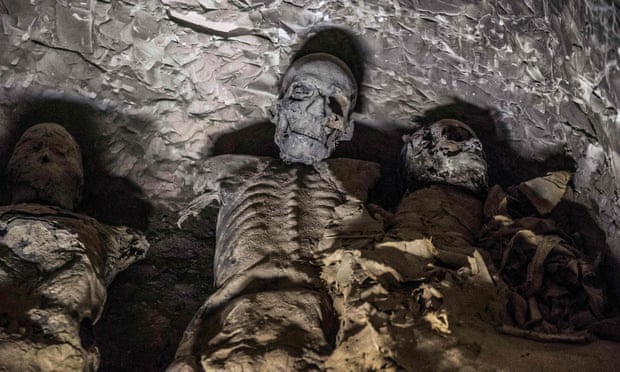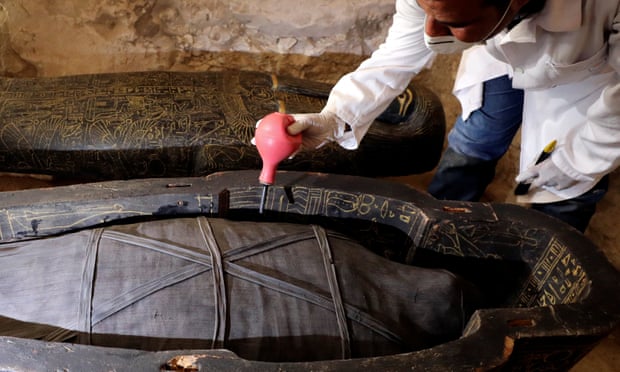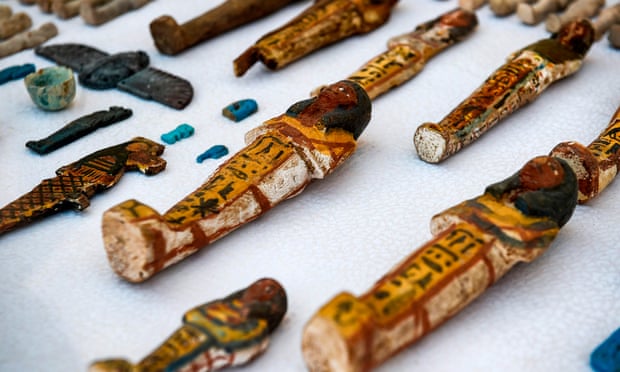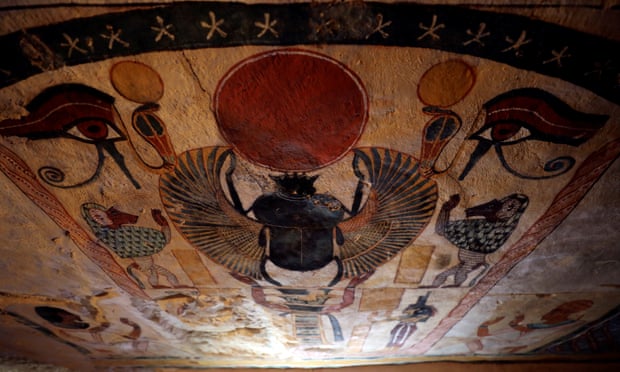Mummy found inside sarcophagus in Luxor tombs that also contained statues and figurines
A well-preserved mummy of a woman inside a previously unopened coffin dating back more than 3,000 years has been unveiled in the southern Egyptian city of Luxor.
The sarcophagus was one of two found earlier this month by a French-led mission in the Al-Assasif necropolis on the western bank of the Nile.
The first one had been opened earlier and examined by officials, but Saturday’s unveiling was the first time authorities had opened a previously unopened sarcophagus before international media.
One of the two contained the “well-preserved” mummified remains of a woman named Thuya, the antiquities ministry said in a statement, but ministry spokeswoman Nevine Aref later said work was continuing to definitively identify the name of the mummy.



“One sarcophagus was rishi-style, which dates back to the 17th dynasty, while the other sarcophagus was from the 18th dynasty,” the minister of antiquities, Khaled al-Anani, said. “The two tombs were present with their mummies inside.”
The 18th dynasty dates back to the 13th century BC, a period noted for some of the most well-known pharaohs, including Tutankhamun and Ramses II.
Located between the royal tombs at the Valley of the Queens and the Valley of the Kings, the Al-Assasif necropolis is the burial site of nobles and senior officials close to the pharaohs.
Among the finds in the tomb were sarcophagi, statues and some 1,000 funerary figurines called ushabtis, made of wood, faience and clay.



The tomb belonged to Thaw-Irkhet-If, the mummification supervisor at the Temple of Mut in Karnak, according to the ministry. The tomb, which also contains mummies, skeletons and skulls, dates back to the middle kingdom – almost 4,000 years ago – but was reused during the late period.
Rubble 300m deep was removed over five months to uncover the tomb, which contained coloured ceiling with paintings depicting the owner and his family.
Egypt has revealed over a dozen ancient discoveries since the beginning of this year. The country hopes these discoveries will brighten its image abroad and revive interest among travellers who once flocked to its famed pharaonic temples and pyramids, but who have shunned the country since its 2011 political uprising.
